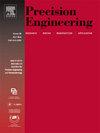Real-time control parameter update and stochastic tool wear monitoring framework for nonlinear micro-milling process
IF 3.5
2区 工程技术
Q2 ENGINEERING, MANUFACTURING
Precision Engineering-Journal of the International Societies for Precision Engineering and Nanotechnology
Pub Date : 2025-03-29
DOI:10.1016/j.precisioneng.2025.03.031
引用次数: 0
Abstract
In modern manufacturing, micro-milling technology encounters challenges such as unpredictable tool wear and dynamic variations in cutting parameters, which adversely affect machining accuracy and safety. This study presents a nonlinear micro-milling mechanical model that combines tool runout, chip separation, stochastic tool wear, and tool-tip trajectory change to accurately predict cutting forces. The Hippopotamus optimization algorithm is introduced to address the particle impoverishment problem in coefficient recognition and improve the real-time update efficiency of the cutting model. Additionally, a DASAT network model combining Recurrent Neural Networks and Convolutional Neural Networks with an attention mechanism is proposed for more precise tool wear prediction, achieving lower prediction error rates compared to LSTM/TCN-based methods. By correlating the predicted tool state with the wear threshold, the system can perform active maintenance interventions to reduce tool failures. The experiment demonstrates that the machining based on the proposed framework can improve surface accuracy while maintaining a stable cutting state, ensure the safety and reliability of the micro-milling process, and provide strong support for process optimization and equipment maintenance.

非线性微铣削过程控制参数实时更新及刀具磨损随机监测框架
在现代制造业中,微铣削技术面临刀具磨损不可预测和切削参数动态变化等挑战,对加工精度和安全性产生不利影响。提出了一种结合刀具跳动、切屑分离、刀具随机磨损和刀尖轨迹变化的非线性微铣削力学模型,以准确预测切削力。为了解决系数识别中的粒子贫化问题,提高切削模型的实时更新效率,引入了河马优化算法。此外,提出了一种结合递归神经网络和卷积神经网络的DASAT网络模型,该模型具有注意机制,可以更精确地预测刀具磨损,与基于LSTM/ tnn的方法相比,预测错误率更低。通过将预测的刀具状态与磨损阈值相关联,系统可以进行主动维护干预,以减少刀具故障。实验表明,基于该框架的加工可以在保持稳定切削状态的同时提高表面精度,保证微铣削过程的安全可靠,为工艺优化和设备维护提供有力支持。
本文章由计算机程序翻译,如有差异,请以英文原文为准。
求助全文
约1分钟内获得全文
求助全文
来源期刊
CiteScore
7.40
自引率
5.60%
发文量
177
审稿时长
46 days
期刊介绍:
Precision Engineering - Journal of the International Societies for Precision Engineering and Nanotechnology is devoted to the multidisciplinary study and practice of high accuracy engineering, metrology, and manufacturing. The journal takes an integrated approach to all subjects related to research, design, manufacture, performance validation, and application of high precision machines, instruments, and components, including fundamental and applied research and development in manufacturing processes, fabrication technology, and advanced measurement science. The scope includes precision-engineered systems and supporting metrology over the full range of length scales, from atom-based nanotechnology and advanced lithographic technology to large-scale systems, including optical and radio telescopes and macrometrology.

 求助内容:
求助内容: 应助结果提醒方式:
应助结果提醒方式:


